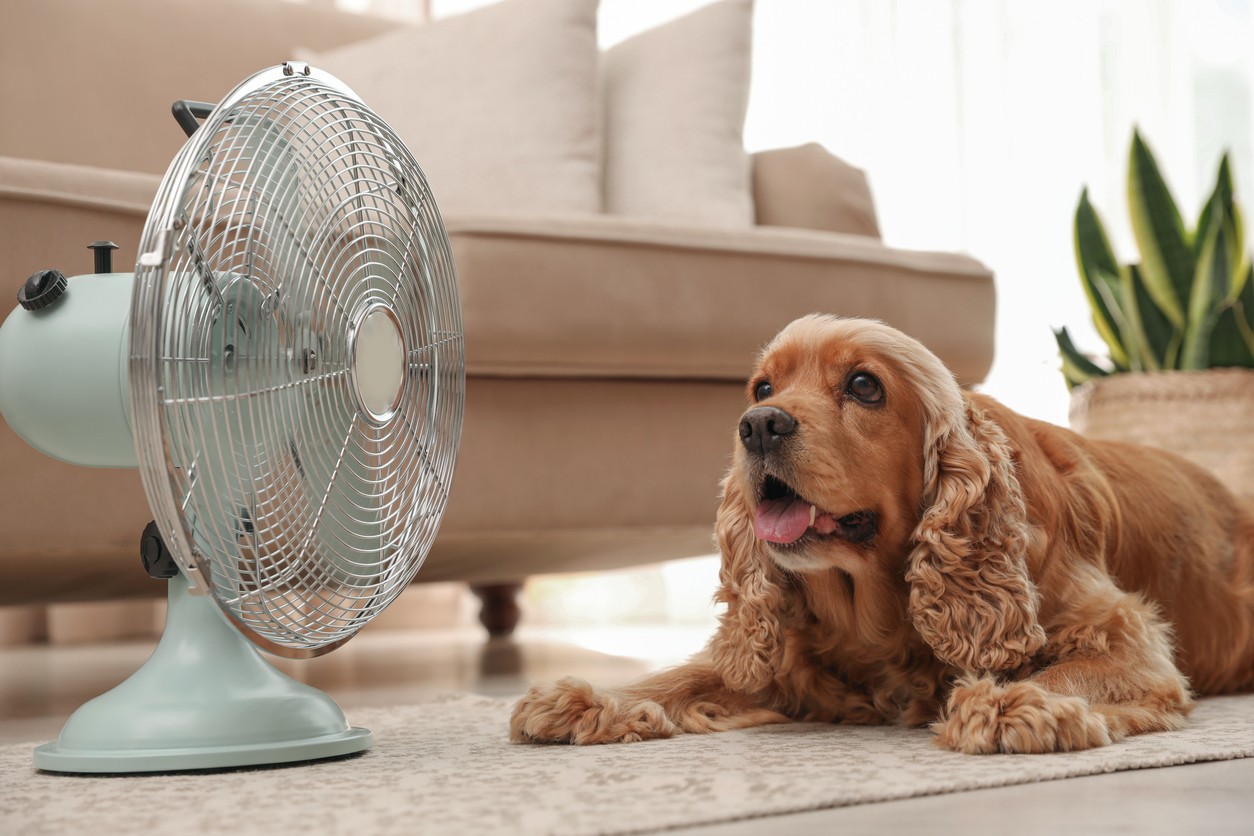The dog days of summer are certainly not made for our four-legged friends. Late summer’s long hours of relentless sun and soaring temperatures turn many outdoor-loving dogs into professional couch canines. But for those dogs who can’t imagine life without their daily jaunt around the block, it’s important to know when it’s too hot to walk your dog.
Here are some general guidelines to help you know when you and your dog should stay indoors and when you can safely enjoy outdoor exercise.
Why is heat such a hot topic for pets?
Like people, dogs are susceptible to dangerous heat-related injuries, including hyperthermia and heatstroke. Heatstroke can arise quickly. Without proper intervention, the condition can lead to permanent organ damage or become fatal. Additionally, dogs can burn their paw pads when walking on hot surfaces, resulting in severe pain and tissue loss.
While all pets are vulnerable to heat-related illness and injury, certain populations are at increased risk, including:
- Brachycephalic or flat-faced breeds, such as pugs, French bulldogs, and boxers
- Puppies and kittens
- Senior pets
- Pets with certain health conditions that affect thermoregulation, such as obesity, and heart or respiratory disease
- Pets with dark-colored fur, as dark fur absorbs heat quickly
How to tell if it’s too hot to walk your dog
Use good judgment and your pet’s behavior as a guide to determine if it’s too hot to walk your dog:
- Monitor weather conditions — Although no specific temperature range has been established as “too hot” for pets, temperatures above 85°F (29°C) can be dangerous, especially with high humidity. Dogs cool themselves through panting, which is an evaporative cooling process. Humidity can decrease panting’s efficacy, and dogs may have difficulty cooling themselves. Consult the heat index—a factor of temperature and humidity—for a more accurate idea of heat intensity. Consider staying indoors when the heat index is above 90°F (32°C).
- Check surface temperatures — Before you ask your dog to walk on pavement, artificial turf, or other heat-absorbing surfaces, check the temperature with the back of your hand. If you can’t comfortably hold your hand in place for five seconds, the surface is too hot for your dog’s paws. Paw pad burns may not be apparent until a walk is over, so don’t rely on your dog’s behavior to decide if it’s too hot to walk. If the pavement is too hot, choose a grass or dirt path or play indoor games.
- Observe your dog’s behavior and body language — Watch your dog for signs of discomfort, such as excessive panting, drooling, lethargy, or reluctance to walk. These signs can indicate that your dog is overheating and should be immediately addressed. Give your dog fresh drinking water and move them to a cooler location, preferably indoors. Without intervention, your dog’s condition may progress and lead to vomiting, diarrhea, loss of coordination, and collapse. If this happens, emergency cooling efforts and emergency veterinary care are required.
When deciding if it’s too hot to walk your dog, the UrgentVet team recommends erring on the side of caution. If you ask the question, the answer is probably “Yes.”

Walking the walk—How to keep your dog cool on a walk
Fortunately for your dog, there’s no need to give up summer walks altogether. Our expert tips on beating the heat and walking smarter, not hotter, include:
- Walking in the morning or evening — Reschedule your dog’s daily walk to take advantage of cooler temperatures. However, because pavement and other surfaces can retain heat for hours, still check these surfaces before walking your dog.
- Keeping your dog hydrated — Take water for you and your dog and stop several times along your route to let your dog drink. Adding water to your dog’s food or serving frozen treats during the day also will increase their water intake and prevent dehydration.
- Selecting a shady route — Opt for routes shaded by trees or buildings. This can make a marked temperature difference and keep you both comfortable.
- Protecting your dog’s paws — Dog boots or paw wax can provide an additional protective layer on heat-retaining surfaces. Consider these products if you must travel on pavement and can’t carry your dog.
- Taking shorter or slower walks — On particularly hot days, keep walks short and sweet, and burn off your dog’s excess energy with indoor activities, such as trick training, hide and seek, or puzzle toys.
As a responsible pet owner, be mindful of the weather and its impact on your pet’s health and well-being. By recognizing when it’s too hot to walk your dog and taking key precautions to keep them cool outdoors, you can ensure that your canine companion stays safe and comfortable during the dog days of summer.
Is your pet exhibiting heat injury signs or unusual behavior? Our UrgentVet teams provide convenient after-hours care for non life-threatening pet emergencies. Find a location near you and check-in online—because your pet can’t wait to feel better.



